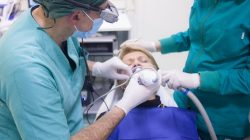Picture this: They tried to look for one thing, and suddenly they turn around and there’s a new mole or any kind of mark on the skin. Poof! You get a care in your heart all of a sudden. As one of the best of the common cancers, this article has tips about skin cancer and how you can examine your skin for skin cancer. Having any idea of exactly what skin cancer is and even the symptoms could definitely save one’s life. This guide will lead you through the proper type, risk factors and early signs that you should never frown on. Now let’s discover how – you can take control of your skin to be healthy and get that glowing skin you’ve always wanted
how to check for skin cancer, examine the skin regularly for unusual moles, spots, or lesions. Look for changes in size, shape, color, or texture. Pay attention to asymmetry, irregular borders, and uneven coloring. If any suspicious signs appear, consult a dermatologist promptly to ensure early detection and proper treatment
What is Skin Cancer?
Skin cancer is a health complication which occurs with skin tissue wherein cells of this organ develop erratically. This irregular growth is mostly related to harms from unisolated rays with sun or tanning lamps.
There are two major types of skin cancer: however there are two other less common skin cancers called melanoma and Kaposi’s sarcoma But before that, there are two rare skin cancers known as melanoma and Kaposi’s sarcoma. The first level carcinomas are basal cell carcinoma, squamous cell carcinoma, and melanomas.
Basal cell carcinoma rarely shows up as a mere, but well-organized, bright, or panacea, which does not recover. Squamous cell carcinoma may clinically manifest itself as red-scaly patches or incongruous erosions to the damaged surfaces. It is more dangerous in general and may be primary or may evolve from a mole or a mole may transform to melanoma.
Getting to the point where skin cancer is a certain disease is a step higher than merely getting to the point of realizing the time to begin searching for signs of this disease. This means that the extent of how one can get a cure or perhaps even reduce skin disorders, is in direct proportion to the effort one is willing to put in to take proper care of the skin as much as possible.

Common Types of Skin Cancer
Skin cancer primarily falls into three main categories: basal cell carcinoma, squamous cell carcinoma, and melanoma.
The commonest type is basal cell carcinoma. It’s normally a slow-growing type that may begin as a small, shiny nodule, or a pink area on the skin exposed to the sun.
Squamous cell carcinoma is known to be more invasive than basal cell carcinoma. It may present as a solid red nodule or a plaque which may be scaly; the skin lesion may be easily bleeding. This type also appears predominantly in regions of the sunnier but can develop any place.
Skin cancer most especially the melanomas is the rarest of all the skin diseases and is the most dangerous. It develops from melanocytes, which are cells responsible for production of pigment in your skin. Melanomas are often asymmetrical and can be any color, then when they move to new areas, they grow quickly.
Knowledge of these types assist you in vigilantly waiting for any changes to occur on the skin.
Risk Factors for Skin Cancer
Everybody is at the risk of skin cancer but some factors bring in significant risk. One of them is taking too much sun exposure. Such people are vulnerable, especially those who are forced to spend many hours in the outside environment without much cover.
Tanning beds are also dangerous as they are. Some individuals may never know that using them can even increase cases of skin cancer, much so to young persons.
Skin type is also an important factor that cannot be overlooked as well. Those with a white skin type, light hair and light eyes are among those who have relatively low melanin pigment, meaning they are at a higher risk from dangerous ultraviolet rays.
Family history should not be ruled out also. One’s relative risk may increase if he or she is related to others in the family who have been diagnosed with skin cancer because of inherited risk factors.
Age is another factor; persons with this risk factor are usually at a higher risk due to body accumulation from sun exposure all through their lifetime. Having this information as a woman puts one in a better position to prevent any scenario which may lead to skin complications.

Early Signs of Skin Cancer
It is important to know when and when not to go to the dermatologist since early detection of skin cancer may be important. Probably the most widespread symptoms is if you have a new mole or other skin spot, which has changed its appearance in any way. The features to look for are inhomogeneous background, irregular outlines and different colors in the same lesion.
Any growths that show up in the images of a mammogram and are not likely the result of normal breast tissue development should also be questionable. He or she said that a small area that feels like a small hump but doesn’t go away after some time can be a sign of something wrong. Consider watching out for sores or spots that OTC treatments won’t treat and heal; they are either too sensitive, bleed and develop scabs.
Moreover, we have lesions that are more than the size of a pencil eraser’s diameter. These might well point at melanoma – one of the most lethal forms of skin cancer.
Please also bear in mind that not all skin changes are necessarily a cause for concern, but it is always wise to develop a keen interest in skin changes. This makes it easier to attend to these warning signs as soon as they appear during one’s routine self exams when need arises to visit a dermatologist.
Importance of Regular Skin Checks
Skin checks are considered a necessary routine in a fight against skin cancer. The earlier one notices any changes on his skin the better the chance of getting a good result for the treatment. Some skin cancers take time to grow and therefore, it becomes a good habit to check your skin.
You don’t have to be a doctor to do these examinations. First, check out your virile territory in proper lighting and wherever you cannot see yourself properly, such as your back or scalp, use a mirror. Pay the most attention to areas such as moles, birthmarks and flicks which alter their size or color. Make sure to also check for any new growths also.
They also recommend annual visits to a dermatologist. A doctor or other qualified professional can note things that you might overlook when checking on yourself and advise you based on your specific risk factors.
As mentioned, proactive approaches with skin health avoid risks associated with skin cancer in your hands. Screening associated with self examination ensures a proper regimen that basically ensures early diagnosis when complications arise. Please do so out, for this is one method which inspires confidence against future dreadful complications.
Tags: KS









